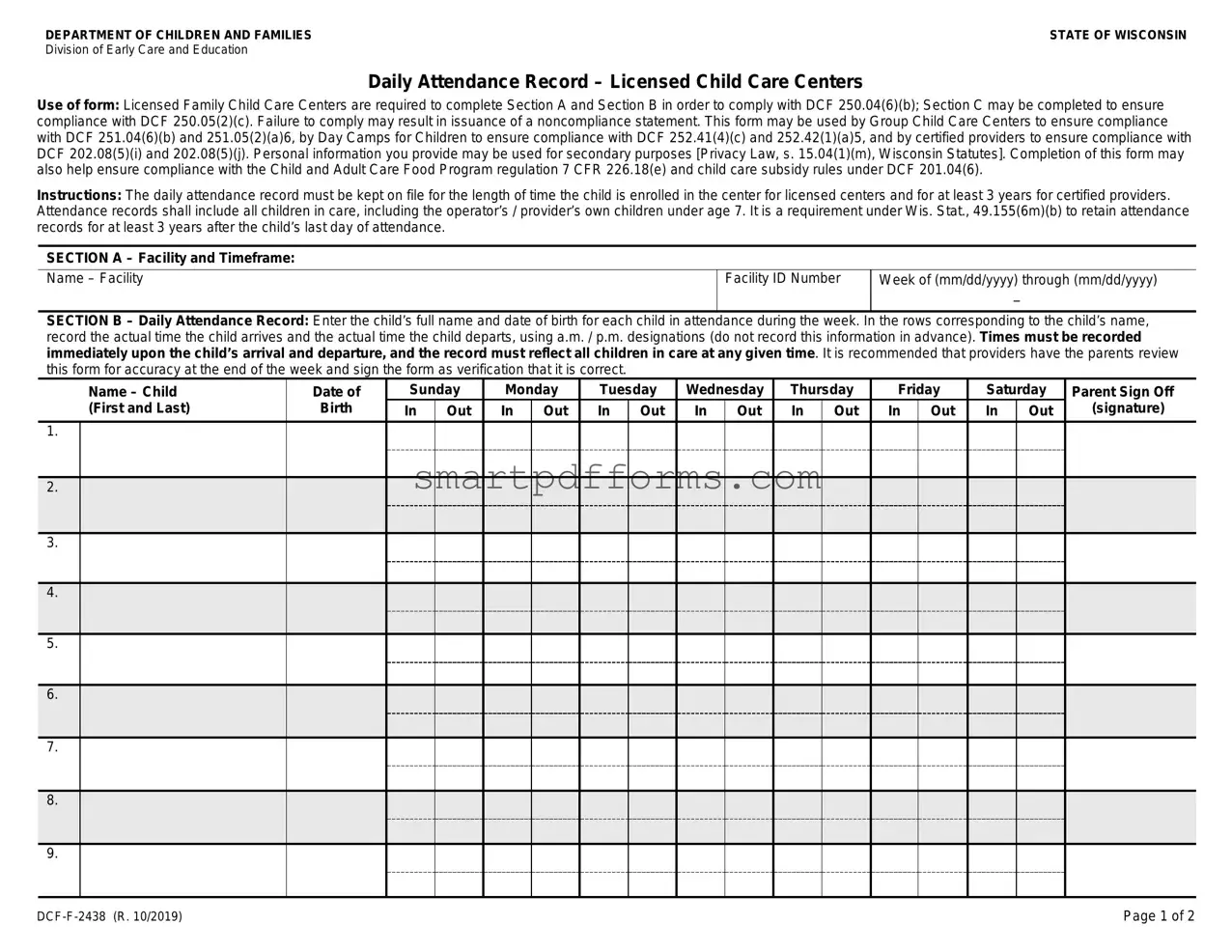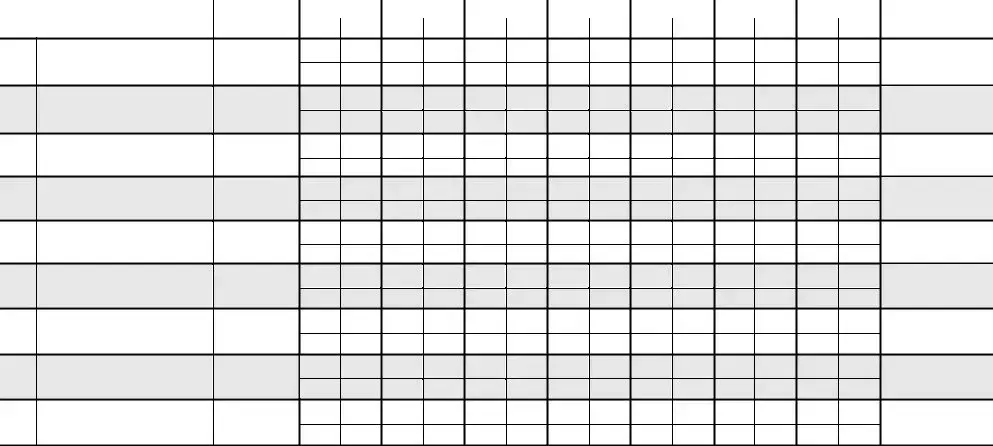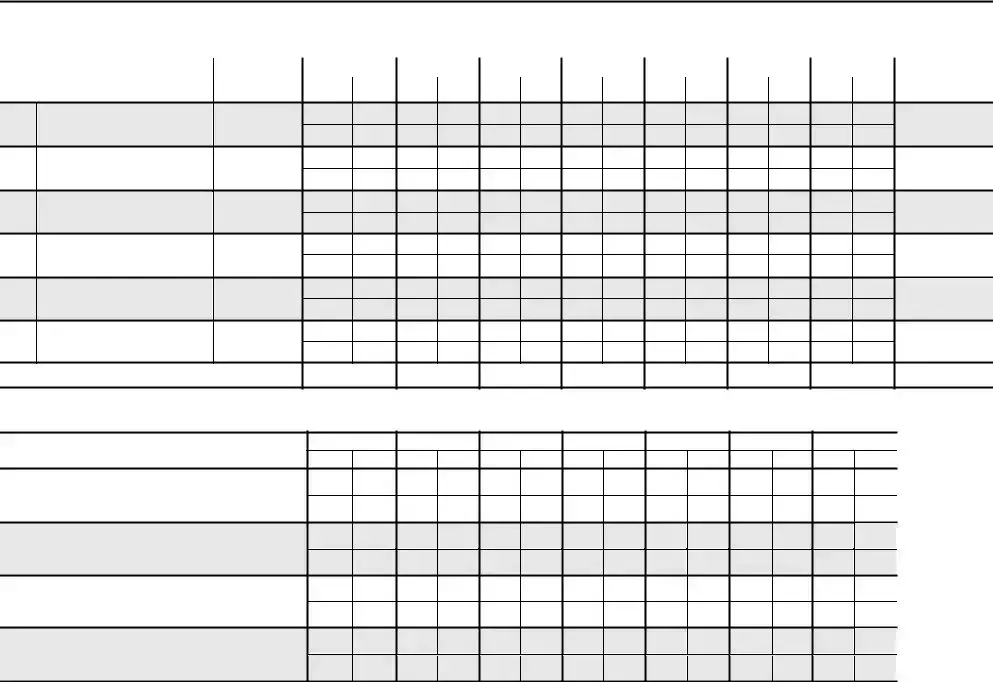Blank Daily Attendance Record PDF Template
The Daily Attendance Record form, as mandated by the Department of Children and Families in the State of Wisconsin, represents a crucial documentation tool for licensed and certified child care providers. It serves multiple compliance requirements, including state regulations and federal programs, ensuring the accurate tracking of children's daily attendance and provider schedules. Designed with specific sections to facilitate comprehensive record-keeping, this form not only aids in maintaining regulatory compliance but also enhances the operational management within child care settings.
To stay compliant and ensure the well-being of children in care, it is essential for providers to complete and maintain these forms diligently. Click the button below to start filling out your form today.


